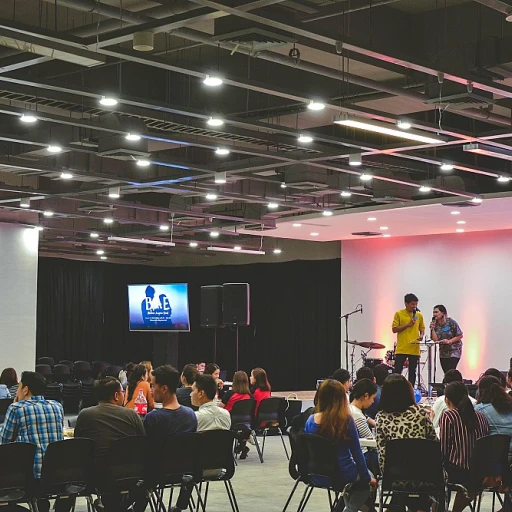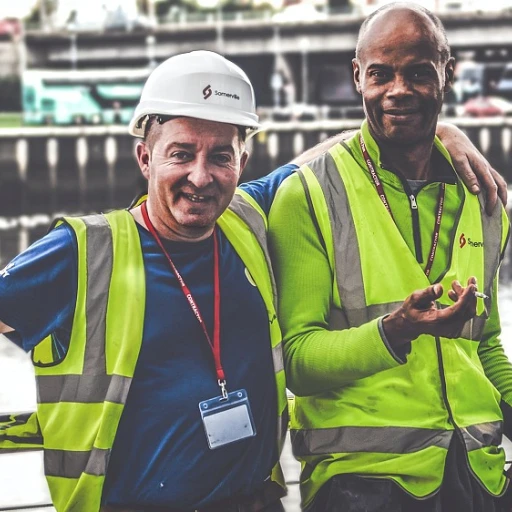Understanding Workforce Resilience
Building Workforce Resilience: A Necessity for Organizations
In a world where change is the only constant, building a workforce that can handle stress and adapt to any situation is more important than ever. Workforce resilience isn't just a buzzword; it's a critical aspect of successful organizations. But what does it mean to have a resilient workforce? And how can organizations foster this quality among their employees?
Resilience is about bouncing back from setbacks, learning from challenges, and moving forward with renewed energy. It's not just about surviving tough times but thriving in them. For employees, this means developing the mental strength to cope with stress, the flexibility to adapt to new work environments, and the problem-solving skills to tackle unexpected challenges.
The Role of Leaders in Fostering Resilience
Leaders play a crucial role in building resilience within their teams. They set the tone for how challenges are perceived and addressed. By promoting a culture of continuous learning and development, leaders can help employees build the skills they need to be resilient. Encouraging open communication, providing support for mental health, and recognizing achievements can also go a long way in helping employees feel valued and capable.
Organizations that prioritize resilience are better equipped to handle disruptions and maintain employee well-being. This approach not only benefits the business in the short term but also ensures long-term success by retaining human capital and fostering a positive work environment.
Long-Term Benefits of a Resilient Workforce
Investing in workforce resilience is not just about weathering the storm; it's about preparing for the future of work. A resilient workforce can adapt to changes in the business environment, embrace new technologies, and continue to deliver results even in challenging times. By focusing on building resilience, organizations can ensure they are ready for whatever comes their way.
To learn more about creating a positive work environment and fostering resilience, check out our article on crafting a winning company culture strategy.
Key Components of a Resilient Workforce
Building Blocks of Workforce Resilience
Creating a workforce that can handle anything thrown its way isn't just a dream. It's about putting together the right pieces to make sure employees can bounce back from challenges and keep the organization moving forward. Let's look at what makes a resilient workforce tick.
Fostering a Supportive Work Environment
A supportive work environment is like the soil that helps plants grow strong. When employees feel safe and valued, they're more likely to thrive. This means encouraging open communication, providing mental health resources, and making sure everyone feels part of the team. By doing so, organizations can reduce stress and help employees handle tough times better.
Encouraging Continuous Learning and Development
Learning isn't just for school kids. In the business world, continuous learning helps employees stay sharp and ready for anything. Offering training programs and opportunities for skill development can boost confidence and problem-solving skills. This not only benefits the individual but also strengthens the whole organization. When people feel like they're growing, they're more likely to stick around and contribute positively.
Promoting Work-Life Balance
Work-life balance is more than just a buzzword. It's about making sure employees have time to recharge and enjoy life outside of work. Organizations that promote flexible working hours and respect personal time can see happier, more productive employees. This balance is essential for long-term resilience, as it prevents burnout and keeps the workforce healthy.
Developing Strong Leadership
Leadership can make or break a team's resilience. Leaders who are approachable, empathetic, and supportive inspire trust and loyalty. They set the tone for how challenges are handled and can guide employees through difficult times. Investing in leadership development is a smart move for any organization looking to build a resilient workforce.
For more insights on building a resilient workforce, check out our crafting a winning employee experience strategy article.
CHRO Strategies for Enhancing Resilience
Strategies for Building Resilience in the Workforce
Creating a resilient workforce isn't just about bouncing back from challenges; it's about thriving amid them. As CHROs, the goal is to foster an environment where employees not only adapt to change but also grow stronger from it. This means investing in strategies that prioritize mental health, continuous learning, and effective stress management. Let's explore how organizations can help employees build resilience.
Fostering a Culture of Continuous Learning
Continuous learning is the backbone of a resilient workforce. Encouraging employees to engage in ongoing education and skill development can significantly enhance their ability to adapt to new challenges. Organizations can offer workshops, online courses, and mentorship programs that focus on problem-solving and adaptability. This not only benefits the employees but also strengthens the organization's human capital, preparing it for the future of work.
Promoting Mental Health and Well-being
Mental health is a crucial component of resilience. CHROs should prioritize creating a work environment that supports employee well-being. This can include offering mental health resources, such as counseling services and stress management workshops. By promoting a healthy work-life balance, organizations can reduce stress levels and improve overall employee well-being. A workforce that feels supported in their mental health is more likely to remain resilient in the face of adversity.
Encouraging Open Communication
Open communication between employees and management is vital for building trust and resilience. Leaders should foster an environment where employees feel comfortable sharing their concerns and ideas. Regular check-ins and feedback sessions can help address issues before they escalate, creating a more supportive and resilient work environment. When employees know their voices are heard, they are more likely to remain engaged and committed to the organization's success.
Implementing Stress Management Programs
Stress is a natural part of any work environment, but it doesn't have to be overwhelming. Implementing stress management programs can help employees develop the skills needed to cope with stress effectively. Techniques such as mindfulness, meditation, and time management can be integrated into the workplace to help employees manage their stress levels better. By equipping employees with these tools, organizations can foster a more resilient and productive workforce.
For more insights on how to boost employee engagement and create a thriving workplace, check out our article on boosting employee engagement.
Leveraging Technology for Workforce Resilience
Using Tech to Boost Bravery and Brainpower
When it comes to creating a resilient workforce, smart tech is no longer a nice-to-have; it's a necessity. After all, building resilience isn’t just about tackling stress or safeguarding mental health—it's about creating an environment where employees can thrive. Let’s face it: technology in the work environment can be both a lifesaver and a headache. Think about those times when a simple software update saves you hours of tedious work. Now apply that to your organization. Technology can help employees tackle challenges, improve their learning development, and encourage continuous learning.Creating a Resilient Work Environment with Technology
Organizations are using a multitude of tech tools to build a resilient workforce. Here’s how these tools contribute to resilience:- Automation & AI: Automation tackles repetitive tasks, freeing up employee time for problem-solving and innovation. AI can provide insights into mental health trends and stress factors, helping leaders make data-driven decisions.
- Collaboration Platforms: With hybrid and remote work becoming the norm, tools like Slack, Microsoft Teams, and Zoom help maintain team cohesion and communication, crucial for employee well-being.
- E-Learning Resources: Employees now have a library of learning resources at their fingertips. Platforms like LinkedIn Learning or Coursera enable continuous learning, a key part of building resilience.
The Human Touch of Tech
When tech gets personal, everything changes. Personalized career paths, learning opportunities, and adaptable work-life options ensure employees are supported, nurtured, and prepared for future work challenges. Technology that prioritizes employee well-being creates a more engaged and resilient workforce. Imagine Jane, an employee at a tech-driven organization. She regularly uses a wellness platform that recommends mental health resources based on her workload stressors. Thanks to a thoughtful blend of technological support and human oversight, Jane feels cared for and equipped to handle work stresses—a testament to how tech can truly amplify human capital. To read more about how infrastructure can improve employee well-being, explore the CHRO Strategies article on boosting employee health.Finding Balance with Technology
Technology's role in workforce resilience isn't just about adoption. Leaders must strike a balance between tech-driven and human-centered approaches. It’s about using technology to build better, more resilient people—not replace them.Measuring Resilience in the Workforce
Gauging Workforce Resilience
When it comes to measuring how well your workforce handles stress and adapts to change, it's not just about numbers. It's about understanding the pulse of your organization and the well-being of your people. A resilient workforce isn't built overnight, and neither is measuring it. Let's break it down.
Employee Feedback and Surveys
Start by gathering insights directly from your employees. Regular surveys can shed light on how they perceive their work environment, stress levels, and overall job satisfaction. These surveys should be more than just a checkbox exercise. Make them a conversation starter. Are your employees feeling supported? Do they have the resources they need to thrive? Their feedback is invaluable in building resilience.
Performance Metrics
Look at performance metrics with a fresh perspective. Are employees meeting their goals? Are teams collaborating effectively? Performance metrics can offer clues about resilience. High performance amidst challenges can indicate a resilient workforce. However, if stress is causing a dip in performance, it might be time to reassess your support systems.
Health and Well-being Indicators
Mental health and well-being are at the core of resilience. Track indicators like absenteeism, turnover rates, and employee health claims. A spike in these areas can signal underlying stress issues. Organizations that prioritize mental health initiatives often see a more engaged and resilient workforce.
Continuous Learning and Development
Invest in learning and development programs that enhance problem-solving skills and adaptability. Employees who are encouraged to learn and grow are more likely to handle stress and changes with ease. This investment not only boosts resilience but also prepares your workforce for future challenges.
Technology's Role in Measurement
Technology can be a game-changer in measuring resilience. Use data analytics tools to monitor trends and patterns in employee behavior and performance. This data-driven approach can provide insights that help leaders make informed decisions about workforce management and development.
In the end, measuring resilience is about understanding your people and creating an environment where they can thrive. It's about recognizing the signs of stress early and taking proactive steps to support your employees. A resilient workforce is your organization's greatest asset, and measuring it is the first step in building a work environment where everyone can succeed.
Case Studies: Successful Resilience Building
Real-Life Examples of Workforce Resilience
Let's take a look at some organizations that have successfully built a resilient workforce. These stories highlight how focusing on employee well-being, continuous learning, and stress management can help employees thrive even in challenging work environments.
Tech Giant's Approach to Continuous Learning
One leading tech company recognized early on that the future of work requires constant adaptation. They implemented a robust learning development program that encourages employees to engage in continuous learning. By offering online courses and workshops, they not only improved skills but also boosted employee morale and engagement. This approach has helped the organization stay ahead in a competitive market, demonstrating that investing in human capital pays off in the long term.
Healthcare Provider's Focus on Mental Health
A major healthcare provider faced significant challenges during the pandemic. To support their workforce, they prioritized mental health by offering counseling services and stress management workshops. This focus on mental health created a supportive work environment, allowing employees to manage stress better and maintain high levels of productivity. The organization's commitment to employee well-being has been instrumental in building resilience among their staff.
Retail Chain's Employee Well-being Initiatives
A well-known retail chain has made employee well-being a cornerstone of their business strategy. They introduced flexible work schedules and wellness programs to help employees balance work life and personal commitments. These initiatives have led to a more resilient workforce, with employees reporting higher job satisfaction and lower stress levels. This case shows that when organizations prioritize employee well-being, they can build resilience and improve overall business performance.
Manufacturing Company's Problem-Solving Culture
In the manufacturing sector, one company has excelled by fostering a culture of problem solving and innovation. They encourage employees to bring forward challenges and work collaboratively to find solutions. This approach has not only improved operational efficiency but also empowered employees to take ownership of their work. By building a resilient workforce that can adapt to change, the company has maintained its competitive edge.
These examples show that building a resilient workforce is not just about strategies but also about creating a supportive environment where employees can thrive. By focusing on continuous learning, mental health, and problem solving, organizations can better prepare for the challenges of the future.








